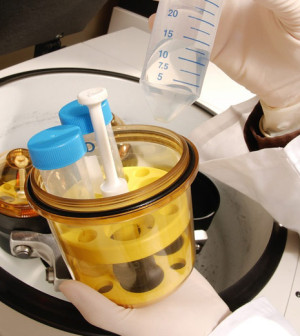- Skip Storing This Everyday Product in the Fridge Door
- Green Tea + B3 Pairing May Boost Brain Health
- Navigating Your Midlife Crisis: Embracing New Possibilities
- City Raccoons Showing Signs of Domestication
- Mapping the Exposome: Science Broadens Focus to Environmental Disease Triggers
- One Week Less on Social Media Linked to Better Mental Health
- Your Brain Changes in Stages as You Age, Study Finds
- Some Suicide Victims Show No Typical Warning Signs, Study Finds
- ByHeart Formula Faces Lawsuits After Babies Sickened With Botulism
- Switch to Vegan Diet Could Cut Your Greenhouse Gas Emissions in Half
What Snake Caused That Bite? New DNA Test Might Tell


DNA tests can reliably identify the type of snake that has bitten a person and could save the lives of many people in countries with deadly venomous snakes, new research reports.
Experts found that if snake DNA could be detected on swabs taken from fang marks on victims, the species of snake could be pinpointed every time. The study was scheduled to be presented Tuesday at the annual meeting of the American Society of Tropical Medicine and Hygiene in New Orleans.
“These findings represent a significant step toward improving care for patients in areas of the world where snakebites constitute a massive but neglected health risk,” study director Dr. Francois Chappuis, chief of the division of tropical and humanitarian medicine at Geneva University Hospitals in Switzerland, said in a society news release.
“This DNA test may hasten more effective bedside diagnostics for snakebite victims, giving them a better chance of surviving and making a full recovery,” Chappuis added.
The researchers studied snakebite victims in Nepal and found that snake DNA could be obtained from about one in four of the bite wounds. One reason why DNA could not be collected was the use of folk or home remedies at the bite site before a patient was taken to a medical clinic.
There are no reliable numbers, but a 2008 study estimated that there are at least 421,000 venomous snakebites, resulting in up to 94,000 deaths, worldwide each year. However, experts believe those figures are much lower than the actual numbers.
It’s believed that several million people may be bitten by venomous snakes each year, and hundreds of thousands die or are permanently disabled due to limb amputation or deformation that occurs because victims don’t get treatment or receive it too late.
“People bitten by snakes in South Asia often do not seek treatment at a medical facility, and if they do, the vast majority don’t take the snake to clinics, although it is often killed, and can’t identify the species that bit them. Yet knowing the species of snake is critical to determining the best course of treatment,” Chappuis said.
Dr. Sanjib Sharma is a professor of medicine at the B.P. Koirala Institute of Health Sciences in Nepal and the study’s principal investigator. “We need new tools in order to save more lives,” he said in the news release.
“There is gross disparity in the management and outcome of snakebites since most occur in rural, agricultural areas while the great majority of health care workers are in urban locations,” Sharma explained.
Chappuis added, “That’s where the recently developed DNA test could be most valuable. Knowing the distribution of snakes and the number of snakebites within a region could help improve allocation of scarce antivenoms to areas where they are most needed.”
The data and conclusions of research presented at medical meetings should be viewed as preliminary until published in a peer-reviewed journal.
More information
The U.S. National Library of Medicine has more about snakebites.
Source: HealthDay
Copyright © 2025 HealthDay. All rights reserved.










